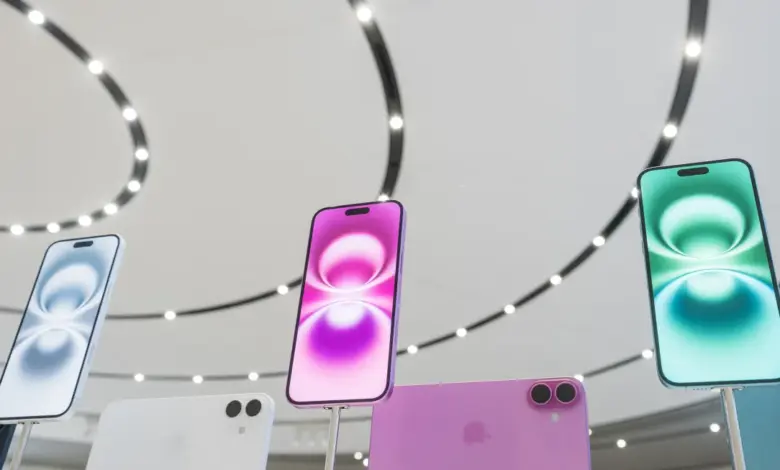
When Apple reports earnings for the third quarter after Wall Street’s closing bell on Thursday, the results will include the just over two weeks of sales figures since iPhone 16 preorders opened on Sept. 13. (Devices officially landed on shelves Sept. 20.)
While that’s only a sliver of what will end up being the iPhone 16’s total lifetime sales, it will provide an important early look at demand for the device that Apple has been hoping would turn around a years-long sales rut. Apple’s overall revenue declined year-over-year for four straight quarters last year, in part because of weak iPhone demand and widespread economic uncertainty.
After repeatedly failing to give consumers an exciting reason to upgrade, some analysts believed Apple Intelligence, a software upgrade that inserted artificial intelligence features throughout the iPhone 16, could spur a sales “supercycle” that the company sorely wants. But early pre-sale estimates from analysts last month suggested a somewhat muted response.
But Apple just this week rolled out the first Apple Intelligence features to the iPhone 16, as well as iPhone 15 Pro models, including new writing tools and the ability to record, transcribe and summarize calls. That means people who bought the iPhone 16 in the first month it was on sale didn’t have access to those AI features until just recently.
The slow drip of new capabilities and features – more Apple Intelligence offerings are expected to drop along with iOS 18.2 in December – may mean Apple fans didn’t feel a huge sense of urgency to upgrade to the iPhone 16.
With Thursday’s report, Wall Street investors will be focused intently on “initial indications on how the iPhone 16 cycle is performing,” as well as the company’s sales guidance for the fourth quarter, CFRA Research analyst Angelo Zino said in a research note.
Investors will also likely be watching sales figures in China, one of Apple’s biggest and most important markets. The iPhone maker slashed prices in China earlier this year amid stiff competition from local rivals, but analysts have hoped that the iPhone 16 could help spark a rebound, despite some hurdles to rolling out Apple Intelligence features in the region.
Wall Street analyst predictions suggest that the iPhone 16 and its AI promise could bring at least a slight boost to sales, but unless Apple exceeds those projections, it won’t be anything huge.
Analysts expect Apple to post $45.2 billion in iPhone sales from the quarter, which would mark nearly 3.2% growth from the same period in the prior year, according to FactSet consensus estimates. That figure will include sales of earlier iPhone models that happened during the quarter, too, but could indicate that the iPhone 16 helped raise sales slightly. In the year-ago quarter, when the iPhone 15 launched, iPhone sales grew about 2.8% year-over-year.
Quarterly sales from China are expected to hit nearly $16.1 billion, up more than 6% from the same period in the prior year.
Overall, analysts expect Apple to report $94.5 billion in sales, up more than 5% year-over-year, and $24.4 billion in profits.
Most analysts, accordingly, say they’re not too worried if the September sales numbers aren’t thrilling. Instead, the most important quarter – as always for Apple – will be the current, holiday quarter.
Wedbush analyst Dan Ives said in a recent investor note he believes there are roughly 300 million iPhones globally that have not been upgraded in more than four years, adding that “a monster holiday season (is) likely on deck.”




